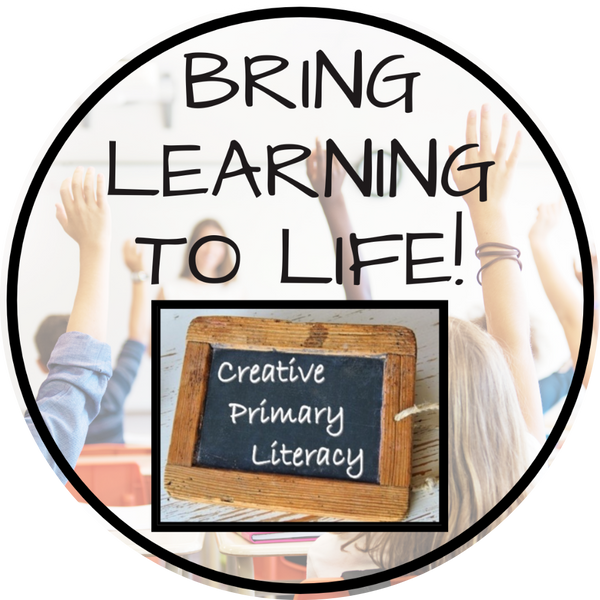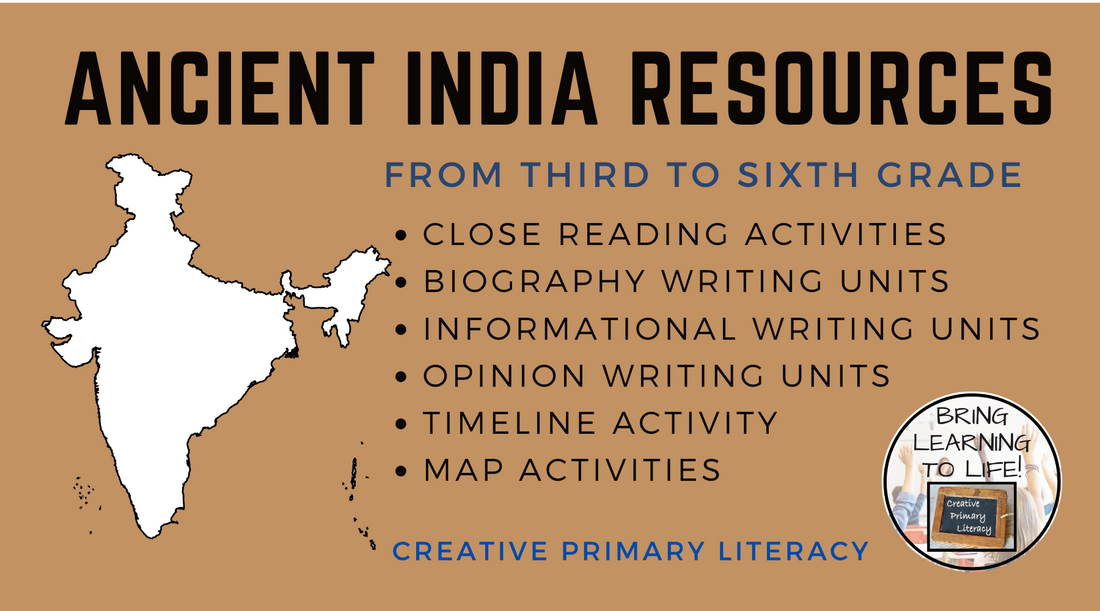From the origins of the civilization in the Indus Valley, through to the construction of the magnificent Taj Mahal, the history of Ancient India is diverse and full of wonder. Indeed, learning about the famous figures, the key advancements, and the birth of worldwide religions can be a highlight of any social studies curriculum.
As with most other ancient civilizations, I like to start off the topic looking at a timeline of key events and figures from Ancient India. This timeline activity allows students to research and sort these key events from the beginnings of the civilization in the Indus Valley, to the birth of religions such as Hinduism and Buddhism. My students always love these lessons, and over time have inter-connected timelines of other civilizations from ancient history. This helps them to visualise the overlapping empires from other parts of the world.
In the next lesson, I begin by looking at the foundations of Ancient India, and the formation of the civilization in the Indus River Valley. For this I use the Indus Valley Close Reading Activity; this comes with a bunch of extension tasks but I generally stick to the comprehension questions and the writing extension activity.
Afterwards, I like to give my students an overview of Ancient India. I allow my students to work with partners and complete a writing assignment. This time I use the Ancient India Informational Writing Unit. In this unit, the students have to sort facts before writing these up into paragraphs, and then completing a final copy on the template provided. This makes a great classroom display to go along with the timeline.
By this point my students have a good understanding of some of the key events, so we follow on from this by looking at the birth of two major religions: Buddhism and Hinduism. Using the extension resources available in the close reading activities, I use the informational texts and crossword puzzles and allow my students to work together to complete both puzzles. It is astonishing how much they actually learn from these activities, as the students need to delve into the texts to find the answers.
Time to look at one of the key figures from the era: Ashoka the Great! Here, I initially flip the classroom and have my students complete the Ashoka the Great Close Reading Activity at home before moving on to the biography writing unit in lesson time. With the writing unit, I get my students to work in pairs initially whilst sorting facts, before writing up their work independently.
Next, we look at who was the most influential figure from the history of India. Initially, we discuss two figures who the students have already studied about: Siddhartha Gautama (in their Buddhism activities) and Ashoka the Great. I then ask whether any of the students have heard of any other famous figures from Indian history, and usually someone mentions Mahatma Gandhi. I go on to introduce the opinion writing unit, and students work independently in finding facts before I collate these facts together on the whiteboard. Students can then independently write their discussion before we debate who each student believes was the most influential and why.
Right, time for a little assessment. For this I use the close reading activity about the Taj Mahal. As with the others, the activity comes with a host of extension activities including a wordsearch and crossword puzzle, but I generally stick to the comprehension and writing task – leaving the other activities for any fast finishing students.
By the end of the unit my students have completed four or five close reading activities, three writing units and a timeline research activity. All the activities above are available individually or are part of the Ancient India Mega Bundle of Activities.
If you have time for one last fun and engaging activity, I recommend an Escape Room activity. There are lots of fun ones on the market but I have a bundle of four about Ancient India, which can also be individually purchased. Some of the resources above are also included in the Ancient India Close Reading Book and in the emergency sub plans bundle below.



For over 2000 more resources check out Creative Primary Literacy.




















